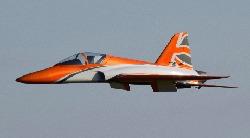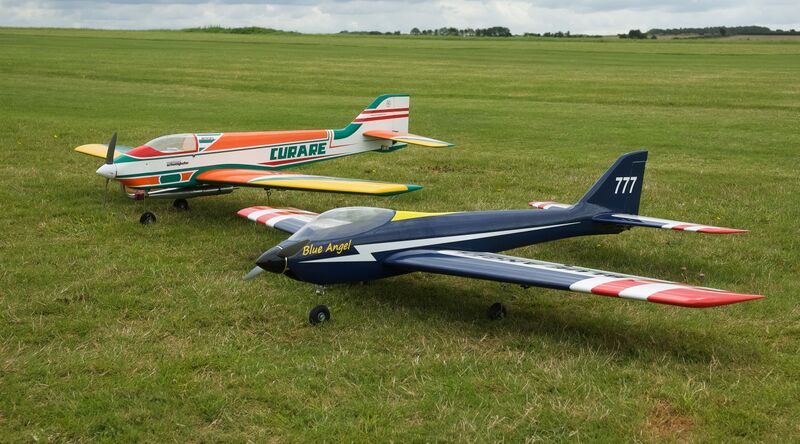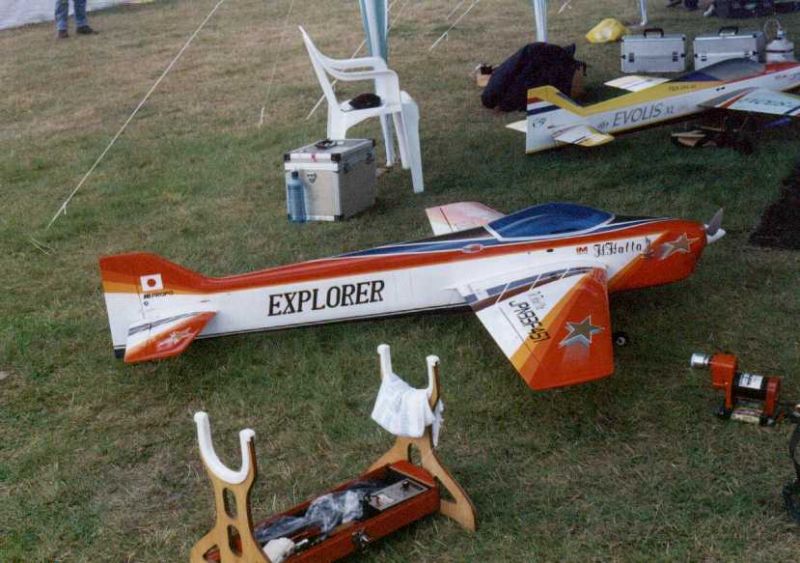- Thank you received: 0
aerobatics design theory
-
 Topic Author
Topic Author
- New Member
-

Less
More
9 years 11 months ago #6470
by
aerobatics design theory was created by
Hi guys,
brushing up on my aircraft design theory, its been a while since I looked at it and have never really had cause to pay too much attention to the knife edge portion of the flight envelope.
being short on money and rich on time I figured its time to have a play and get a better understanding of what's going on and replace the rather tired MX2 foamy airframe with something that flies a bit better.
does anybody have any insights into fuz side area? able to point me in the direction of some info?
I think I have a basic understanding of how the positioning of the side area of the fuz affects how the model rolls and how much rudder is required to maintain knife edge. Just after some more detail and maybe some rough rules of thumb?
thanks!
brushing up on my aircraft design theory, its been a while since I looked at it and have never really had cause to pay too much attention to the knife edge portion of the flight envelope.
being short on money and rich on time I figured its time to have a play and get a better understanding of what's going on and replace the rather tired MX2 foamy airframe with something that flies a bit better.
does anybody have any insights into fuz side area? able to point me in the direction of some info?
I think I have a basic understanding of how the positioning of the side area of the fuz affects how the model rolls and how much rudder is required to maintain knife edge. Just after some more detail and maybe some rough rules of thumb?
thanks!
Please Log in or Create an account to join the conversation.
- JonTappin
-

- Offline
- Platinum Member
-

Less
More
- Posts: 1179
- Thank you received: 265
9 years 11 months ago #6508
by JonTappin
Replied by JonTappin on topic aerobatics design theory
Hi Ade
I don't claim to be an aerodynamics expert but can comment from experience.
Knife edge flight basically depends on side area, the more you have, the better the knife edge performance. Generally speaking the side area at or in front of the cg is the most effective, you only have to look at f3a designs through the ages to see this. As knife edge flight became more common in f3a manoeuvres through the years fuselage depths increased, also canalisers were then introduced to further increase rudder power, as I understand the theory is that the device channels the air along the fuselage and stops it rolling off the fuselage, therefore increasing lift, this effect also happens with biplanes. The full size Pitts is one of the few aeroplanes that can sustain knife edge flight.
The fus shape doesn't have as much bearing on rolling (or pitching) with rudder as other factors. For roll couple, the dihedral angle can be adjusted to remove this. Low wings will need some dihedral, mid wings will need less or possibly none at all, high wings need anhedral.
Pitch coupling is affected by relative position of the wing and tail above or below the fus centre line, cg position, relative wing and tail areas etc. Most modern f3a and IMAC designs tend to have mid wings with the wing and tail centre lines in line. Full size aerobatic aircraft tend to have lower wings, but this is for forward visibility for the pilot, tails tend to be higher but for structural reasons. They don't have spring centred sticks so pitch couple is less of an issue for full size pilots.
Hope that helps, it probably also answers some questions you didn't even ask
I don't claim to be an aerodynamics expert but can comment from experience.
Knife edge flight basically depends on side area, the more you have, the better the knife edge performance. Generally speaking the side area at or in front of the cg is the most effective, you only have to look at f3a designs through the ages to see this. As knife edge flight became more common in f3a manoeuvres through the years fuselage depths increased, also canalisers were then introduced to further increase rudder power, as I understand the theory is that the device channels the air along the fuselage and stops it rolling off the fuselage, therefore increasing lift, this effect also happens with biplanes. The full size Pitts is one of the few aeroplanes that can sustain knife edge flight.
The fus shape doesn't have as much bearing on rolling (or pitching) with rudder as other factors. For roll couple, the dihedral angle can be adjusted to remove this. Low wings will need some dihedral, mid wings will need less or possibly none at all, high wings need anhedral.
Pitch coupling is affected by relative position of the wing and tail above or below the fus centre line, cg position, relative wing and tail areas etc. Most modern f3a and IMAC designs tend to have mid wings with the wing and tail centre lines in line. Full size aerobatic aircraft tend to have lower wings, but this is for forward visibility for the pilot, tails tend to be higher but for structural reasons. They don't have spring centred sticks so pitch couple is less of an issue for full size pilots.
Hope that helps, it probably also answers some questions you didn't even ask
The following user(s) said Thank You:
Please Log in or Create an account to join the conversation.
- JonTappin
-

- Offline
- Platinum Member
-

Less
More
- Posts: 1179
- Thank you received: 265
9 years 11 months ago - 9 years 11 months ago #6511
by JonTappin
Replied by JonTappin on topic aerobatics design theory
Last edit: 9 years 11 months ago by JonTappin.
The following user(s) said Thank You:
Please Log in or Create an account to join the conversation.
- JonTappin
-

- Offline
- Platinum Member
-

Less
More
- Posts: 1179
- Thank you received: 265
9 years 11 months ago #6512
by JonTappin
Replied by JonTappin on topic aerobatics design theory
The following user(s) said Thank You:
Please Log in or Create an account to join the conversation.
- JonTappin
-

- Offline
- Platinum Member
-

Less
More
- Posts: 1179
- Thank you received: 265
9 years 11 months ago #6513
by JonTappin
Replied by JonTappin on topic aerobatics design theory
The following user(s) said Thank You:
Please Log in or Create an account to join the conversation.
-
 Topic Author
Topic Author
- New Member
-

Less
More
- Thank you received: 0
9 years 11 months ago #6514
by
Replied by on topic aerobatics design theory
Canilisers! thats what those things that are a bit reminiscent of F1 from a few years back are called!
thanks Jon, that's exactly what I was after
so....
in terms of profile,
if we take a line from the motor shaft down through the wing centre line then tail should be in line too. keep as much area as possible in front of the CG.
does the position vertically of the area affect roll coupling? eg if more than 50% of the area was above the motor/wing/tail line would it give roll coupling?
what about fin/rudder area should that be kept as close to centre line as possible too?
plan form:
Straight leading edge should give least yaw to roll coupling?
thanks Jon, that's exactly what I was after
so....
in terms of profile,
if we take a line from the motor shaft down through the wing centre line then tail should be in line too. keep as much area as possible in front of the CG.
does the position vertically of the area affect roll coupling? eg if more than 50% of the area was above the motor/wing/tail line would it give roll coupling?
what about fin/rudder area should that be kept as close to centre line as possible too?
plan form:
Straight leading edge should give least yaw to roll coupling?
Please Log in or Create an account to join the conversation.
Moderators: DaveBright
Time to create page: 0.413 seconds
Latest Posts
-
-

- Various Gliders from Dave Ambrose ex W.M.A.C Membe...
- In WimborneMac Members / For Sale - Exchange - Wanted
- by 4Pedalsfly
- 1 week 1 day ago
-
-
-

- Ray Ivey's Models
- In WimborneMac Members / For Sale - Exchange - Wanted
- by Phil Ford
- 2 weeks 7 hours ago
-
©
2009 - 2025
WMAC PCF Design



